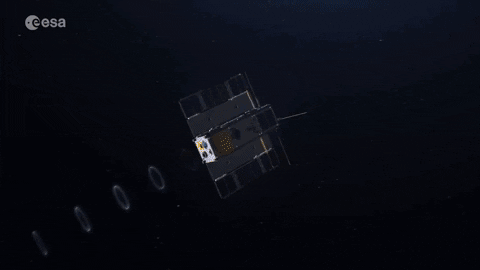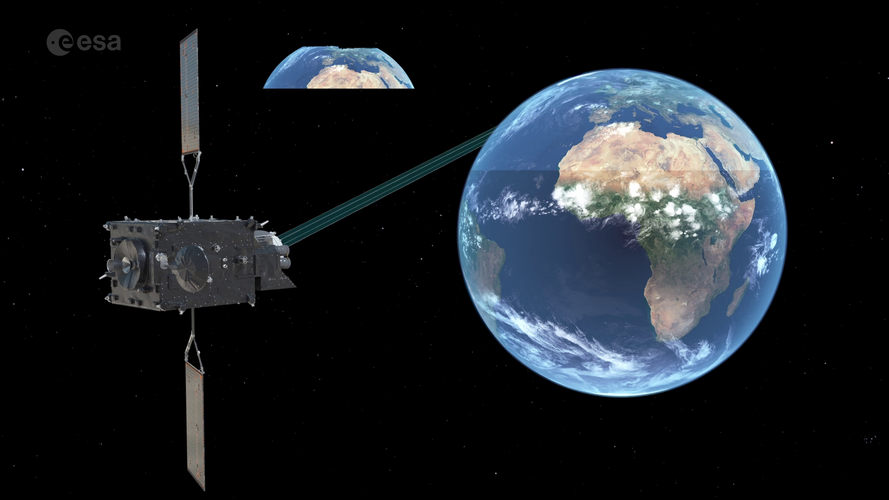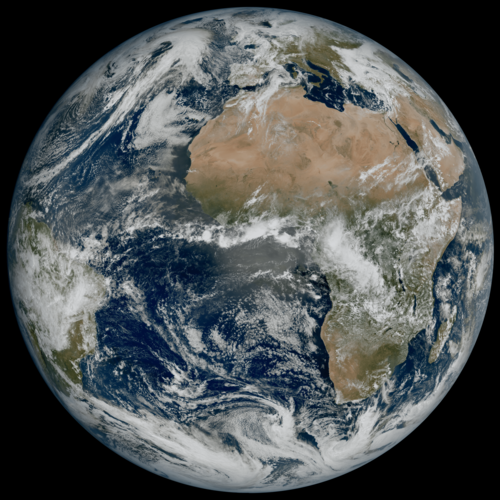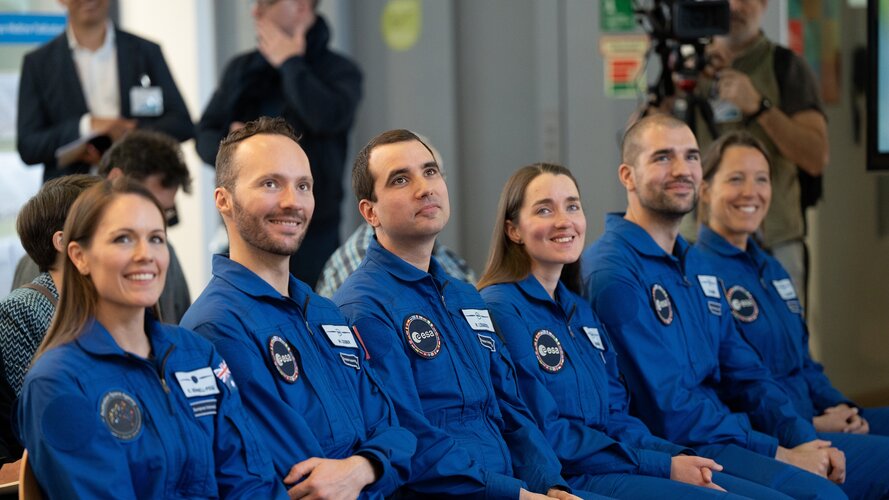
Copernical Team
ESA oversees in-orbit cybersecurity demonstration

Meteosat Third Generation's first stunning image
 Video:
00:03:57
Video:
00:03:57
Europe’s latest weather satellite, the Meteosat Third Generation Imager, has just delivered its first image of Earth. What does this satellite do exactly? And what does this mean for weather forecasting? Learn more about the Meteosat Third Generation and how this new generation of satellites is set to revolutionise weather forecasting in Europe.
The Meteosat Third Generation image can be downloaded here.
New weather satellite reveals spectacular images of Earth

Europe’s latest weather satellite, the Meteosat Third Generation Imager, has just delivered its first view of Earth – revealing conditions over Europe, Africa and the Atlantic in remarkable detail.
ESA’s Astronaut Class of 2022 | first news conference
 Video:
00:34:37
Video:
00:34:37
ESA astronaut candidates Sophie Adenot, Pablo Álvarez Fernández, Rosemary Coogan, Raphaël Liégeois and Marco Sieber took up duty at the European Astronaut Centre (EAC) on 3 April 2023 to be trained to the highest level of standards as specified by the International Space Station partners.
Watch the replay of their first news conference from EAC in Cologne, Germany.
Czech Republic latest nation to sign on to NASA's moon-focused Artemis Accords
 The Czech Republic on Wednesday became the 24th country to sign NASA's Artemis Accords, a set of principles for countries participating in the American space program to return astronauts to the moon.
Czech Foreign Minister Jan Lipavský signed the agreement at NASA headquarters in Washington, D.C., Wednesday.
The non-binding agreement establishes a set of guidelines to guide coop
The Czech Republic on Wednesday became the 24th country to sign NASA's Artemis Accords, a set of principles for countries participating in the American space program to return astronauts to the moon.
Czech Foreign Minister Jan Lipavský signed the agreement at NASA headquarters in Washington, D.C., Wednesday.
The non-binding agreement establishes a set of guidelines to guide coop Brushing Ubajnara: Sols 3819-3820
 Tactical planning started an hour and a half later than usual this morning, because we had to wait for better-illuminated Navcam images of the Ubajara block (seen at bottom center in this image). The Rover Planners needed these better images to determine whether the Ubajara target can be brushed using the DRT, and promptly confirmed that they are GO for brushing!
This was good news, becaus
Tactical planning started an hour and a half later than usual this morning, because we had to wait for better-illuminated Navcam images of the Ubajara block (seen at bottom center in this image). The Rover Planners needed these better images to determine whether the Ubajara target can be brushed using the DRT, and promptly confirmed that they are GO for brushing!
This was good news, becaus US senators launch renewed push to thwart China
 US senators announced a major cross-party effort Wednesday to combat China's growing global influence by limiting the flow of investment and state-of-the-art technology to the Asian giant while deterring any potential threat to Taiwan.
The push comes after President Joe Biden signed a package last year aimed at boosting competition with Washington's main economic rival, with $52 billion in n
US senators announced a major cross-party effort Wednesday to combat China's growing global influence by limiting the flow of investment and state-of-the-art technology to the Asian giant while deterring any potential threat to Taiwan.
The push comes after President Joe Biden signed a package last year aimed at boosting competition with Washington's main economic rival, with $52 billion in n Do your homework to prep for the 2023 and 2024 eclipses and beyond
 This year and next, Americans will have the extraordinary opportunity to witness two solar eclipses as both will be visible throughout the continental U.S. On Oct. 14, 2023, the moon will obscure all but a small annulus of the sun, producing a "ring of fire" eclipse. On April 8, 2024, the eclipse will be total in a band stretching from Texas to Maine.
Both occurrences promise to be remarka
This year and next, Americans will have the extraordinary opportunity to witness two solar eclipses as both will be visible throughout the continental U.S. On Oct. 14, 2023, the moon will obscure all but a small annulus of the sun, producing a "ring of fire" eclipse. On April 8, 2024, the eclipse will be total in a band stretching from Texas to Maine.
Both occurrences promise to be remarka What will the Artemis Moon base look like?
 The next time NASA goes to the Moon, it intends to stay. Under the Artemis program, the US space agency plans to maintain a human presence, for the very first time, on a celestial body other than Earth.
But building a lunar base is no small feat. It will need power generators, vehicles and habitats, and the space industry is racing to meet the technological challenges.
"It's the Super Bo
The next time NASA goes to the Moon, it intends to stay. Under the Artemis program, the US space agency plans to maintain a human presence, for the very first time, on a celestial body other than Earth.
But building a lunar base is no small feat. It will need power generators, vehicles and habitats, and the space industry is racing to meet the technological challenges.
"It's the Super Bo Momentus signs contract to carry hosted payload for Hello Space
 Momentus Inc. (NASDAQ: MNTS) has signed an agreement with Hello Space, an internet of things (IoT) through satellite tech company, to carry a hosted payload of a demo deployer carrying four pocketqube satellites on the Vigoride-7 mission targeted to launch on the SpaceX Transporter-9 mission no earlier than October 2023.
Hello Space is a satellite IoT service provider company capable of cr
Momentus Inc. (NASDAQ: MNTS) has signed an agreement with Hello Space, an internet of things (IoT) through satellite tech company, to carry a hosted payload of a demo deployer carrying four pocketqube satellites on the Vigoride-7 mission targeted to launch on the SpaceX Transporter-9 mission no earlier than October 2023.
Hello Space is a satellite IoT service provider company capable of cr 
